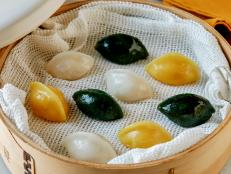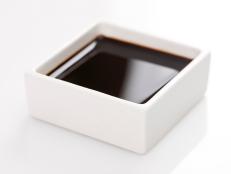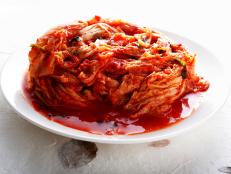This One Condiment Is What Your Barbecue Has Been Missing
How to turn your barbecue basics up a notch.

Get a Premium Subscription to the Food Network Kitchen App
Download Food Network Kitchen to sign up and get access to live and on-demand cooking classes, in-app grocery ordering, meal planning, an organized place to save all your recipes and much more.
When Chef Edward Lee moved to Louisville, KY, he knew he needed to find a way to make his barbecue stand out. That need is how he landed on this recipe for Korean BBQ Baby Back Ribs. Starting with a classic base of garlic, ketchup, butter and brown sugar, he adds soy sauce, Worcestershire, black pepper and a hefty portion of a Korean chili paste known as Gochujang.
Gochujang is a widely versatile fermented chili paste. It's a popular ingredient used in Korean cuisine, adding deep, rich flavor to a variety of dishes — it can even be used solo as a dipping sauce. And according to Lee, the paste gives a recipe like his chili “just a hint of spice,” and, “a really nice layer of fermented flavor.” On the Food Network Kitchen app, Lee puts his own spin on classic dishes like nachos, chili and ribs using Gochujang. And you can do it too.
During his Korean BBQ Baby Back Ribs class, Lee lets his barbecue sauce made with Gochujang simmer slowly on low heat for about one to two hours, giving all the flavors plenty of time to come together. After coating his ribs in a dry rub and baking, he adds the sauce before popping back in the oven for the final touch. The result is ribs with a sweet, spicy and fermented flavor.

A few other easy recipes that get a boost from gochujang are Lee’s Korean-Style Texas Chili and Gochujang Chili Nachos. During his class on the Food Network Kitchen app, he starts his chili by browning cubed beef chuck roast adding onion, garlic and jalapeno for heat. But to really pump it up, he turns to a few tablespoons of gochujang. He finishes up with tomatoes, beef stock, brown sugar and chili in adobo sauce, plus a myriad of spices and a bottle of a dark stout beer for rich color and bitterness. You can eat the chili on its oen or piled on top of tortilla chips with cheese for a seriously flavorful nacho plate.
Related Links:
































